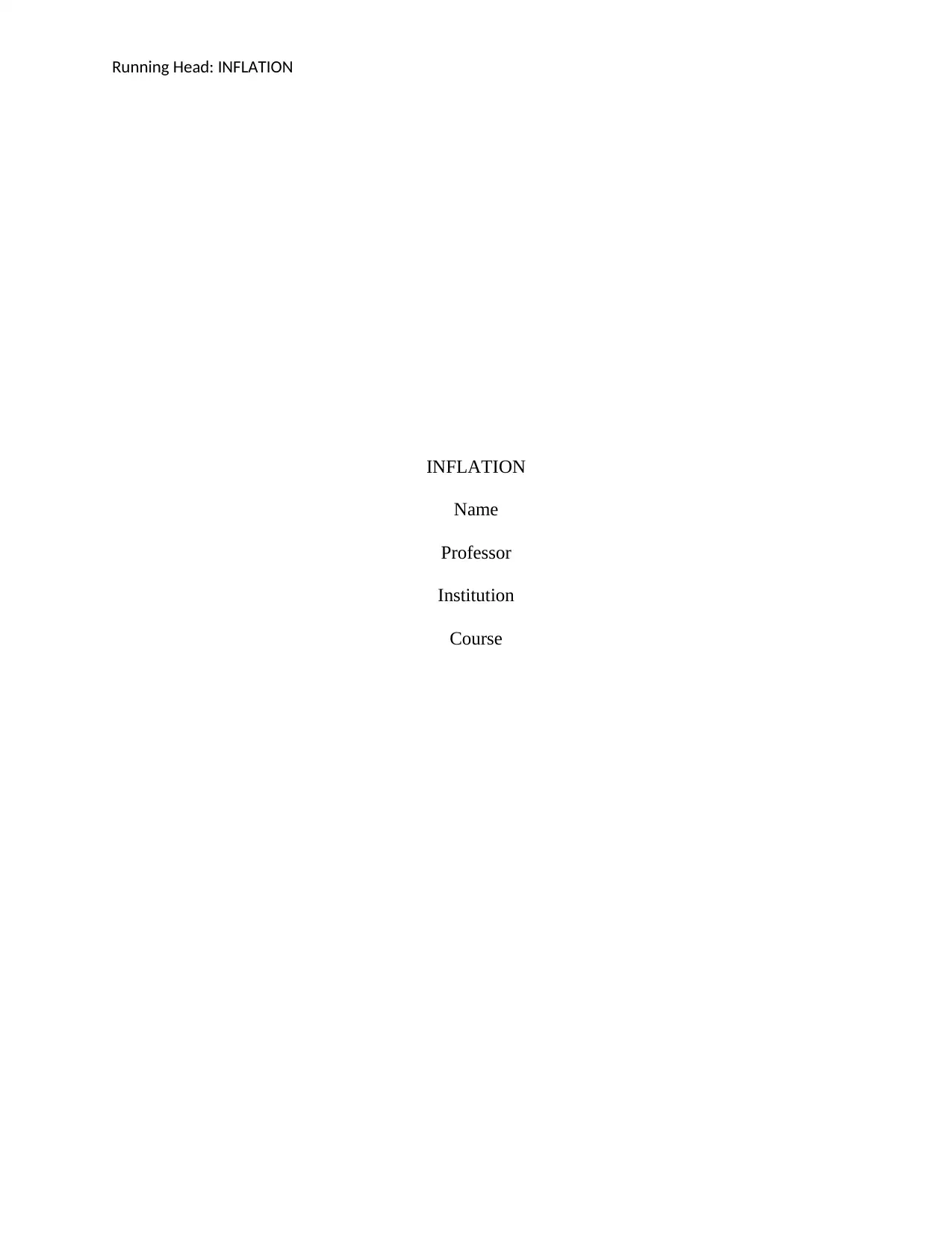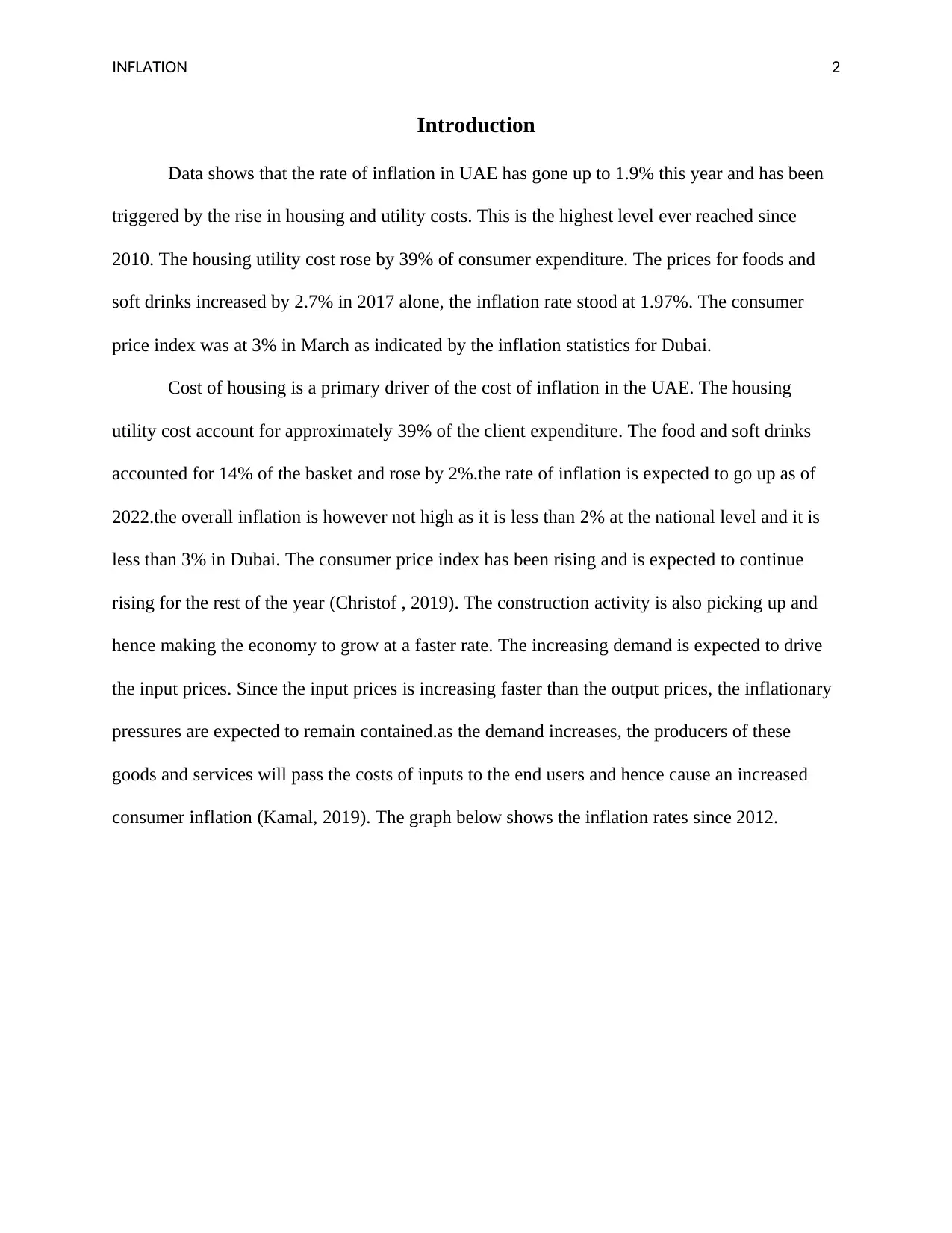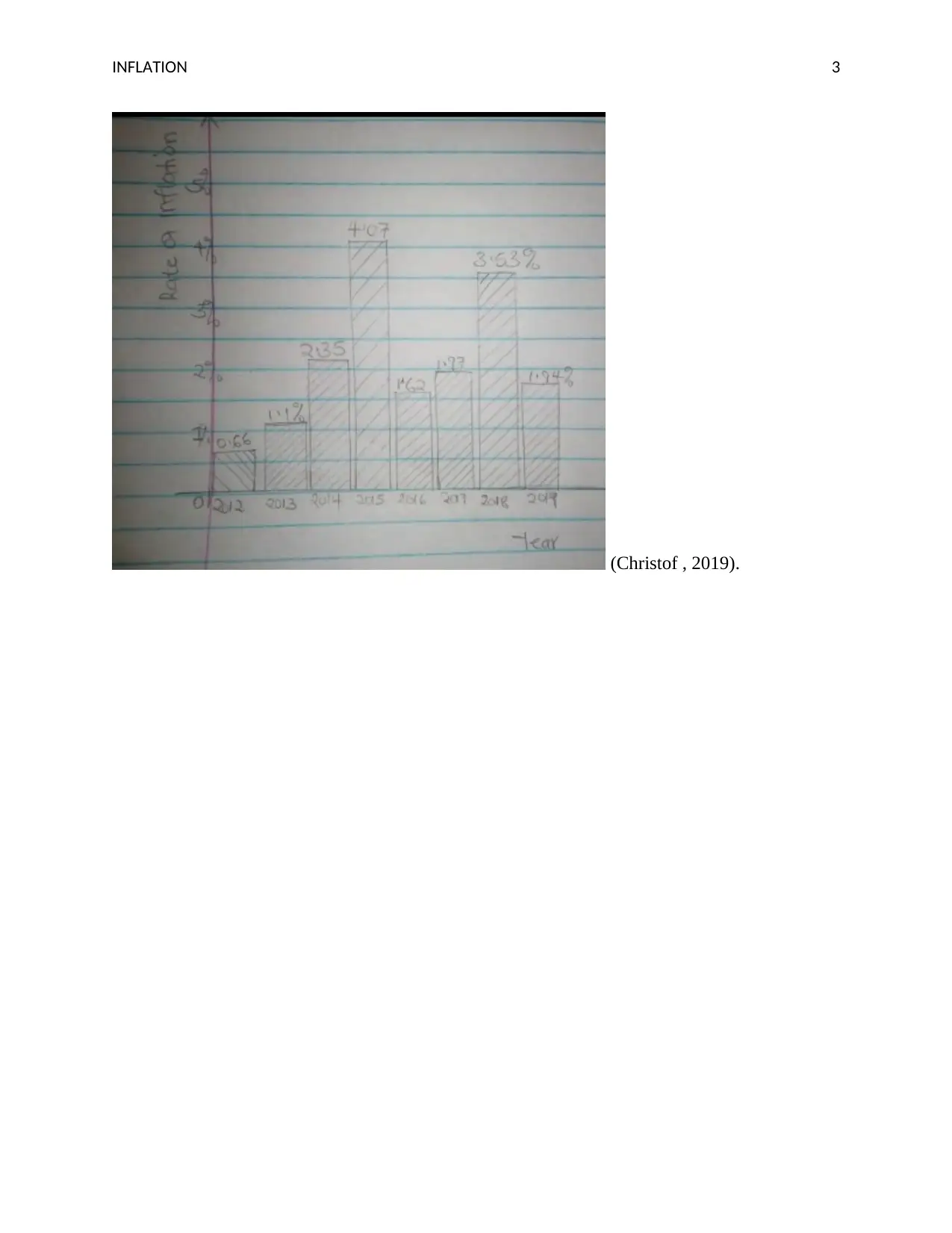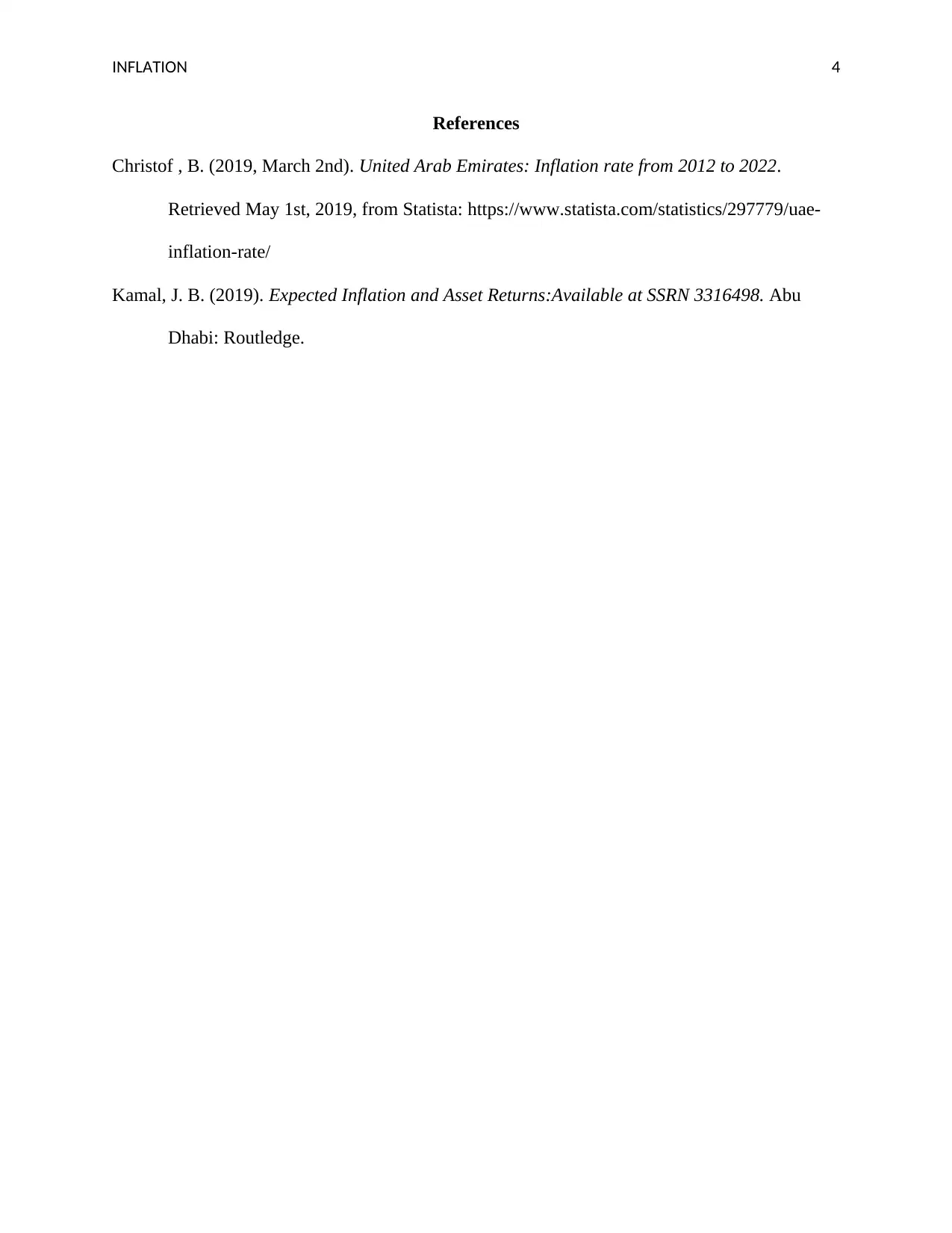Inflation in the UAE: Analysis of Economic Factors and Market Trends
VerifiedAdded on 2022/12/26
|4
|382
|36
Report
AI Summary
This report provides an analysis of inflation in the United Arab Emirates (UAE), focusing on economic trends and contributing factors. The report highlights that inflation in the UAE has reached 1.9%, driven primarily by rising housing and utility costs, which constitute a significant portion of consumer expenditure. The consumer price index (CPI) is also discussed, with an observed increase. The report also considers the impact of increasing construction activity and rising input prices, which are anticipated to influence consumer inflation. Data from 2012 to 2022, and references are included to support the analysis. The report underscores the importance of understanding these economic indicators for future projections.
1 out of 4











![[object Object]](/_next/static/media/star-bottom.7253800d.svg)